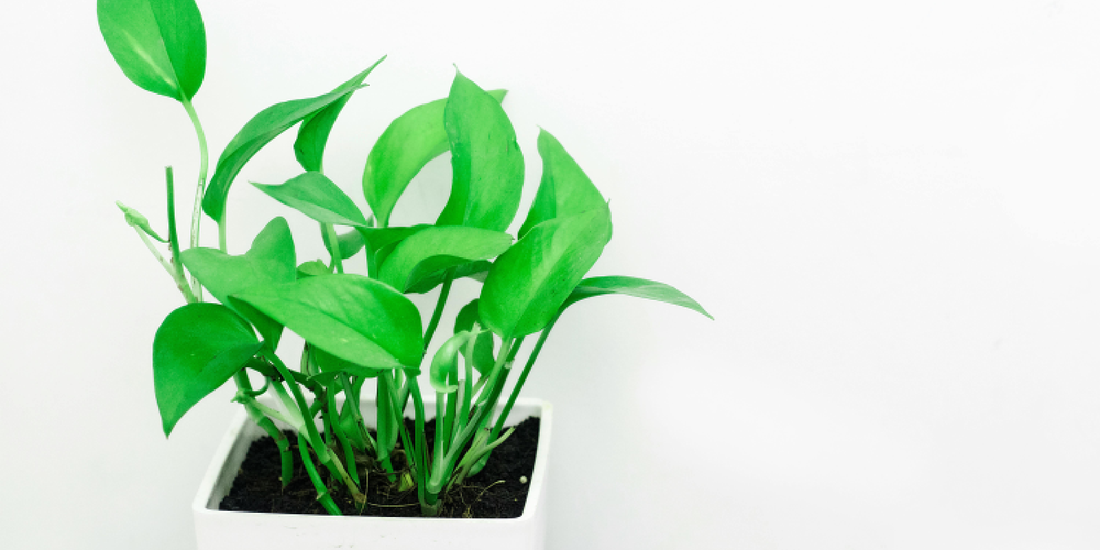
Simple Ways to Help Your Indoor Plants Grow Healthy and Strong
Share
If you’ve ever brought a plant home, only to watch its leaves droop a few weeks later, you’re not alone. Growing plants indoors takes more than just watering—it’s about light, balance, and understanding what your plants really need.
With modern living spaces becoming smaller and sunlight harder to find, products like the amoyls VerdantGlow S-Shaped 8-Tier Plant Shelf with Grow Lights have made indoor gardening easier for everyone. But even with great tools, a bit of basic knowledge goes a long way.
This article will guide you through simple, science-based tips on how to help indoor plants thrive, how to use natural white grow lights effectively, and how to turn your living space into a calm, green oasis.
1. Know Your Plants’ Natural Origins
Every plant has a story—some evolved under tropical canopies, others on rocky mountain ledges. Understanding where your plant comes from helps you recreate its preferred environment indoors.
- Tropical plants like pothos, calatheas, and ferns love humidity and filtered light.
- Desert species like succulents and cacti need strong light but very little water.
- Temperate herbs like mint or basil thrive in bright, mild conditions with good air circulation.
When you group plants by similar needs, it becomes much easier to care for them together on a multi-tier shelf like the VerdantGlow.
2. Light: The Invisible Food Source
Light isn’t just brightness—it’s energy. Plants “eat” light through photosynthesis, using chlorophyll to turn light into sugar and growth.
If your home doesn’t get enough sunlight, your plants may:
- Grow thin, pale, and stretched (“leggy” growth)
- Drop leaves
- Stop producing new shoots
That’s when grow lights become your plants’ best friend.
Unlike traditional purple grow lights, the amoyls VerdantGlow shelf uses natural white LEDs, which imitate sunlight and look soft in your home. This kind of full-spectrum white light helps plants:
- Develop balanced color and sturdy stems
- Avoid the yellowing that happens under weak light
- Grow naturally without disturbing your room’s atmosphere
3. Understanding Natural White Grow Lights
Natural white grow lights include a mix of red, blue, and green wavelengths—the same ones found in real sunlight.
- Blue light encourages leaf and stem growth.
- Red light promotes flowering and fruiting.
- Green light helps light penetrate deeper into leaves.
This balance is why white grow lights are ideal for homes—they support plant health while also looking like regular, pleasant lighting.
The amoyls VerdantGlow 8-Tier Shelf is designed around this concept. Its built-in LEDs provide stable brightness for all tiers, so even the lower plants get enough energy to grow.
4. Watering the Smart Way
Overwatering is the number-one reason indoor plants die. Most roots need both moisture and air—too much water pushes out oxygen, causing rot.
Follow these simple rules:
- Always check the top 2–3 cm of soil before watering. If it’s dry, it’s time.
- Use pots with drainage holes.
- Empty the saucer after watering so roots don’t sit in water.
On a vertical shelf like the VerdantGlow, you can easily water each tier without spilling onto the others. The open S-shape design also improves airflow, which helps soil dry evenly.
5. The Right Temperature and Humidity
Indoor plants prefer the same conditions humans do—temperatures between 18°C and 26°C and moderate humidity.
- In winter, keep plants away from heating vents.
- In summer, avoid direct blasts of air conditioning.
- Mist tropical plants or use a small humidifier to keep humidity around 50–60%.
Because the VerdantGlow’s lights stay cool, you can safely place plants close to them without heat stress.
6. Feeding Your Plants
Even the best light can’t replace nutrients. Over time, soil loses minerals, so feeding your plants every few weeks keeps them strong.
- Use liquid fertilizer diluted to half strength during active growth seasons (spring to early autumn).
- Skip feeding in winter when plants rest.
Balanced nutrition—light, water, and food—makes plants more resistant to pests and diseases.
7. Creating the Perfect Layout
Plant arrangement matters. Tall or light-hungry species should go on the upper shelves; shade-tolerant plants can stay lower.
Here’s one example setup for the VerdantGlow 8-Tier Shelf:
- Top Tier: Small succulents or basil that love bright light.
- Second Tier: Herbs like mint or thyme.
- Middle Tiers: Decorative tropicals—pothos, spider plants, or peace lilies.
- Bottom Tiers: Ferns, philodendrons, or snake plants that prefer softer light.
This vertical design not only saves space but also recreates the natural layers of a forest.
8. Cleaning and Maintenance
Dust can block light and clog plant pores. Wipe your leaves gently with a damp cloth every few weeks.
Also, clean your grow light bars and shelf surfaces regularly. The VerdantGlow’s open-frame design makes this quick—just detach the light bars and wipe them down with a dry microfiber cloth.
9. Watching for Plant Signals
Plants communicate through their appearance:
- Yellow leaves often mean overwatering or poor drainage.
- Brown tips can signal low humidity or too much fertilizer.
- Slow growth usually means lack of light.
Observe your plants closely—small adjustments make a big difference. When you use a system like the amoyls VerdantGlow, it’s easy to change light timing or move pots between tiers to meet each plant’s needs.
10. Setting the Light Schedule
Most indoor plants grow best with 10–12 hours of light per day.
You can connect your VerdantGlow Shelf to a smart plug or timer so the lights turn on and off automatically. This mimics natural daylight cycles, which helps plants maintain their internal rhythms.
Avoid leaving the lights on 24 hours—it can stress your plants, just like people who never sleep.
11. Seasonal Adjustments
Plants, like humans, follow the rhythm of seasons.
- In spring, increase watering and feeding as they wake up and grow fast.
- In summer, monitor heat and ensure enough airflow.
- In autumn, gradually reduce water and fertilizer.
- In winter, keep light duration steady and avoid overwatering.
Because the VerdantGlow provides consistent lighting year-round, it helps stabilize these seasonal transitions even in dark apartments.
12. The Mental Benefits of Greenery
Caring for plants isn’t just about beauty—it’s also therapy. Studies show that spending time with plants lowers stress, improves mood, and boosts creativity.
The act of watering, pruning, and watching new leaves unfold connects you with the slower rhythms of nature. That’s one reason many people place their VerdantGlow shelf beside a desk or sofa—it turns a corner into a peaceful sanctuary.
13. Sustainable Gardening at Home
Indoor gardening can be part of a sustainable lifestyle:
- Use energy-efficient LEDs like those in the VerdantGlow to cut electricity use.
- Choose eco-friendly soil and compostable pots.
- Reuse water from washing vegetables for watering plants.
Even small green steps add up. Each plant contributes to cleaner air and a calmer home.
14. Combining Beauty and Science
The amoyls VerdantGlow S-Shaped 8-Tier Plant Shelf with Grow Lights isn’t just a piece of furniture—it’s a living system. Its curve follows the natural flow of growth, while its light mimics daylight to help plants photosynthesize.
It’s where aesthetic design meets plant science, making it easier for anyone—beginner or expert—to create a lush, thriving garden indoors.
15. Final Thoughts
Helping indoor plants grow is both simple and rewarding.
Remember:
- Give them the right amount of light.
- Water carefully.
- Watch and respond to their signals.
- Use a functional setup like the amoyls VerdantGlow shelf to make care easy and beautiful.
With patience, your plants will flourish—and your home will feel brighter, fresher, and more alive.
